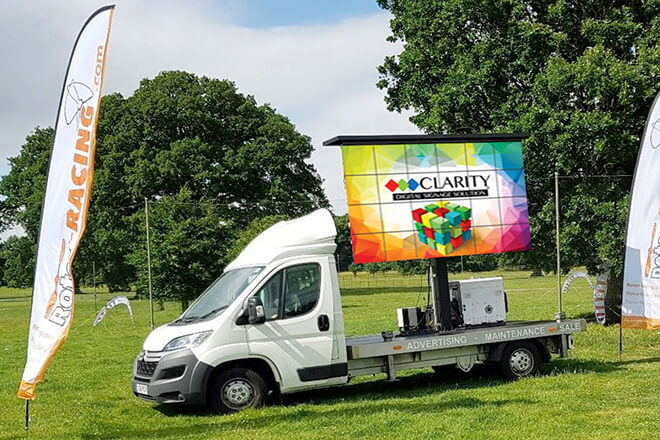
1. What is a truck LED screen?
A truck LED screen, as the name implies, is a screen that is mounted on a truck, bus, or taxi. This is what “Mobile Billboard” claims. The truck LED screen is powered by a separate power supply and communicates with the dot matrix LED unit board via the control card.
During the vehicle loading movement, the truck’s LED screen can play video or still images. They are not permanent and can be relocated from one location to another. It has stronger stability, anti-interference, shockproof, dustproof, and other requirements than standard fixed and stationary LED screens.
In short, it’s a really inventive outdoor advertising tool.
2. How does the LED truck screen work?
Ordinary LED billboards are large outdoor LED screens that must be installed in certain locations, such as highways or other busy routes, to capture the attention of passing motorists. The truck LED screen is not stationary and can move in any direction. The truck can be driven to any location with a high volume of people in order to attract the attention of additional target groups.
The LED truck screen has a composite cabinet with double-sided LED screens mounted on both sides. The cabinet’s workbench is outfitted with a host computer that can continually show dynamic films and static patterns in a loop and scroll. This type of truck is typically dual-powered. In order to facilitate dynamic demonstration during driving, the onboard generator in the compartment can be used. The AC power supply can also be taken while parked. Furthermore, you can select the hydraulic lifting function of the screen, add some support legs to the chassis, and even put a screen to the car’s tailgate.
3. Features of LED truck screen
The screen’s brightness may be altered in sections depending on the time of day, and it can be lowered at night to lessen light pollution.
Support dot-matrix screen playback, which can play corporate commercials, government marketing material, and information about public welfare, among other things.
A variety of programs can be played repeatedly, and users can change them as necessary.
Different times of day can be used to play advertisements. Prime time has a stronger advertising impact than other times, and it also produces better returns on investment.
Information can be entered in a variety of ways, such as by U disk, WiFi, GPRS, and more.
The text’s content is modifiable, allowing consumers to adapt it to suit their needs.
4. Benefits of using LED truck screen
Combining leisure, entertainment, and advertising as a whole, may capture the audience’s attention to the greatest extent possible and generate enormous benefits for businesses. It strongly increases the intangible cognition of advertising audiences on products and brands, and improves customers’ high attention to corporate brands and products, relying on the benefits of its high reach rate.
The LED screens and big screens used in traditional activities take time to build and disassemble. LED screen panels and large screens used in conventional activities require time to install and disassemble. The LED screen truck does not need to be installed and is convenient and fast, so it is not time or space constrained. It is stoppable and practicable, and you can freely select a mobile or stationary advertising audience. Follow the company’s locked target consumers, conduct zero-distance contact, and give news in a targeted manner.
By doing away with the limitations of a geographic environment and metropolitan areas, it can move back and forth on fixed lines and non-fixed lines all day long, which has the advantages of great mobility and a broad audience.
The screen is vibrant, filled with a sense of three dimensions, and has a good visual impression. This mobile truck’s shape alone makes it simple to get the attention of the general public.
5. On What occasions do you need to use LED truck screens?
The LED screen put on the car is portable, has a huge viewing area, and draws a sizable crowd. It is the best carrier for advertising. The sector of commercial advertising or leisure activities gets the biggest use. The following is a detailed introduction to the application of different LED truck screens on the above occasions.
- Commercial advertising and entertainment
1) Rear window LED screen
The screen is typically monochrome or two-color, displaying text information, and the communication methods include wireless, wired, and U disk. It is displayed on the rear windows of taxis, buses, and other vehicles.
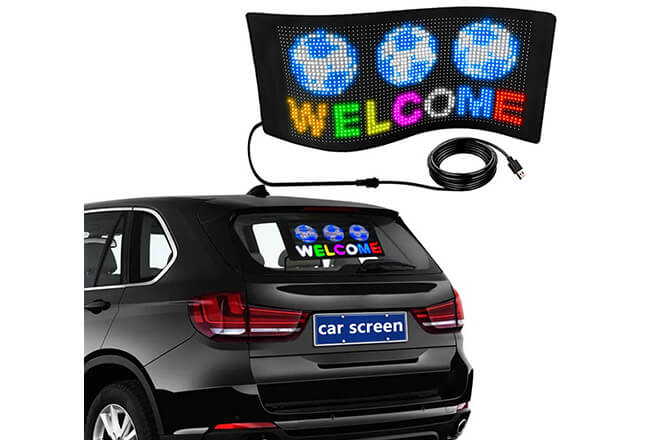
2) Roof LED screen
When mounted on the roof of a taxi, it not only serves as a taxi light cabinet, but it may also display advertisements. Allow mobile media to spread throughout the city. Its primary function is to display text information via GSM, GPRS, and GPS.
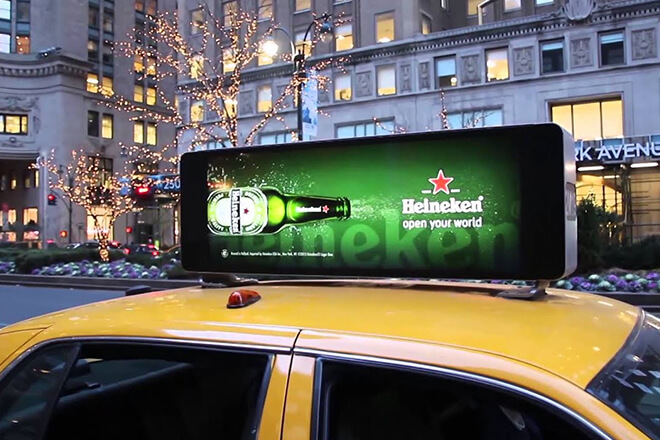
3) Mobile LED screen car
It is mostly utilized in ads, public service announcements, performances, and so on. It is mostly used to play videos, images, and other data. In general, it is changed on huge trucks and adapted to meet specific purposes. It has the ability to raise and lower the onboard LED display.
It can be used for square festivities, stage backgrounds for outdoor plays, and other similar purposes. For advertising investors, modest investment means limitless business options.
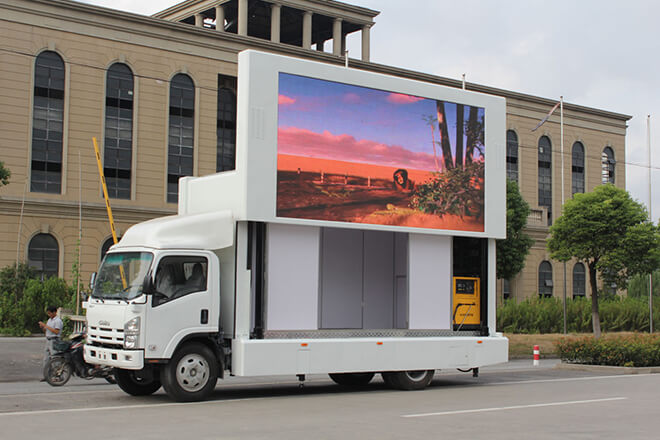
4) Bus LED screen
The LED screen is critical to the bus’s overall appearance. The wireless network can provide access to information such as real-time news, weather forecasts, and adverts. Furthermore, complete information such as parking announcements can be shown. It not only gives a greater level of service to passengers, but it also provides major benefits to operators.
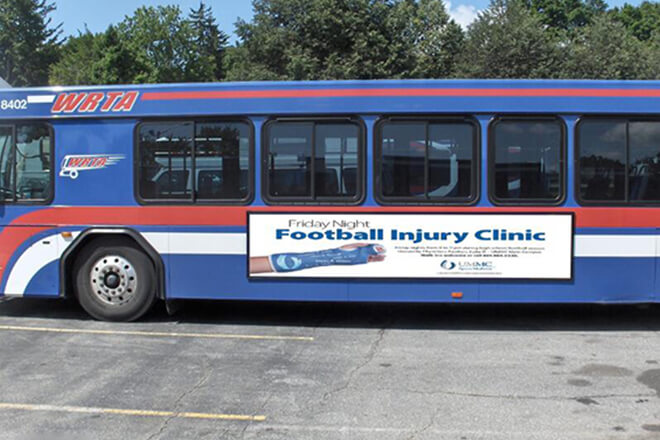
6. What should be paid attention to when using the LED truck screen?
- Noise intensity
Because some locations have strict noise regulations, we recommend selecting a power supply without a fan for your project.
- Taking shockproof measures
To extend the service life of a vehicle-mounted LED screen, it is required to use a shock-proof chassis and a shock-proof pad for protection or choose a connector with a shock-proof feature.
- Anti-falling measures
The flat wire and the power supply can both be used to reinforce the screen, and a self-locking buckle can be employed to keep the module from slipping off after vibration.
- Determine the brightness based on the environment
The brightness of LED screens on buses, taxis, and trucks will influence the vision and traffic safety. Excessive screen brightness has an impact on travel safety, while inadequate brightness has an impact on the visual experience of passengers and pedestrians.
You can set it to 50 initially, then manually modify it. It requires 7000-8000 cd/m2 brightness to display clearly in direct sunshine.
- Static electricity
Vehicles are susceptible to static electricity while in operation, particularly in autumn when the electrostatic voltage can reach thousands of volts. It is simple to harm ICs and LED lights if anti-static precautions are not implemented.
- Temperature
Vehicles usually park outside, necessitating a wide temperature range for the power supply and screen components to function effectively.
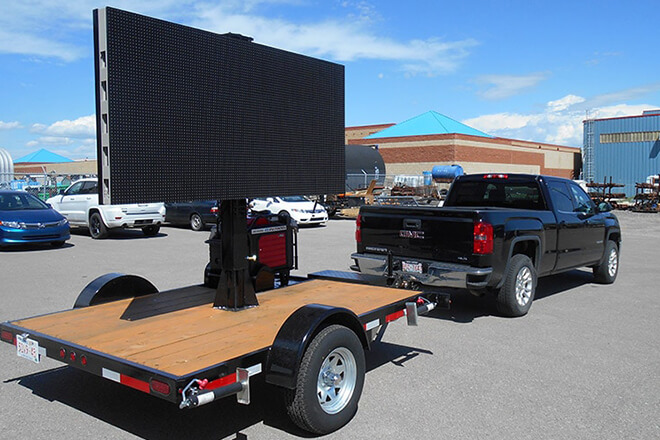
7. Should you buy an LED truck screen?
If you’re looking for truck LEDs for the first time, you could be split between renting and buying.
Purchasing a truck LED screen is unquestionably a superior option if you intend to use it for an extended period of time. Let us discuss two roles!
- For renters
Renting truck LED screens instead of purchasing them can save you a lot of money. Renting an LED screen will be less expensive than purchasing one. LED truck screens are now mostly available for rental. Renting a truck is a preferable alternative for certain organizations because they do not use vehicles all of the time.
- For the owner
If you intend to generate money by renting out truck LED screens or if you intend to use them permanently for advertising purposes, purchasing is the best option. Furthermore, renting out multiple times might provide a speedy return on investment.
Rent is usually calculated on a daily basis. Prices may differ depending on market conditions, design, size, and marketing time. Mobile billboards with static pictures range in price from $300 to $1,000 per truck every day. In the meanwhile, digital mobile billboards can cost up to $1,800 per truck every day.
8. Conclusion
This page describes the various types, operating principles, and safety measures for truck LED screens, which are gaining market share. For the most professional truck LED screen solutions, please contact us.
